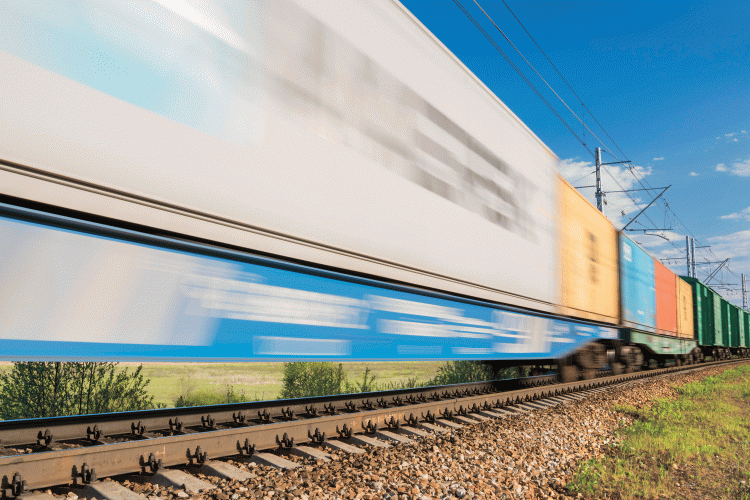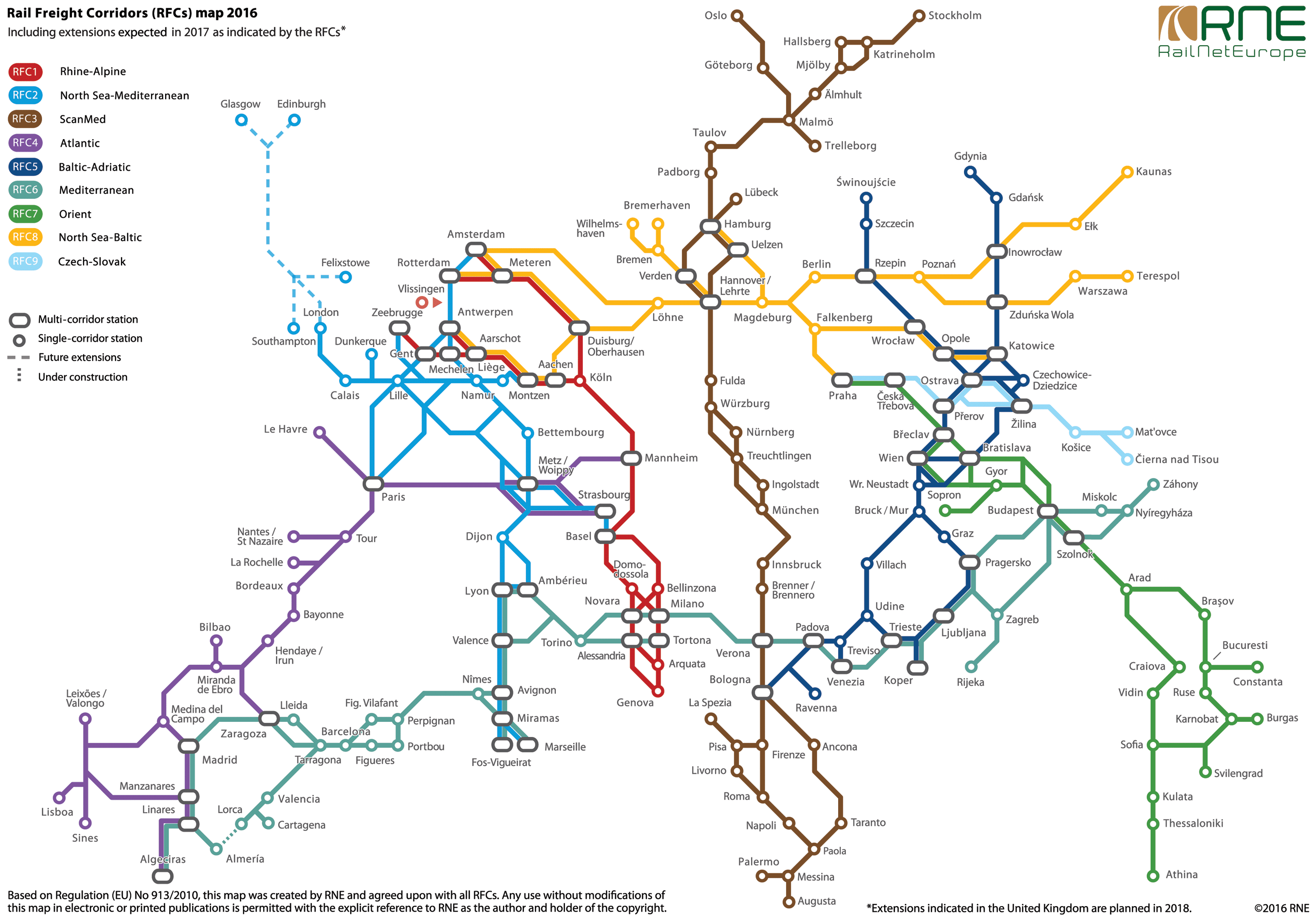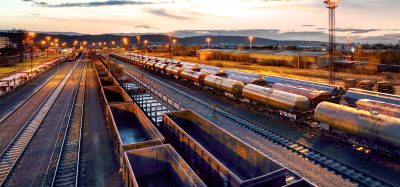Incentives for retrofitting rail wagons as a result of noise abatement strategies
Posted: 6 November 2016 | Maria Price, Markus Vaerst (ERFA) | No comments yet
As controlling the levels of railway transportation noise continues to be a hot topic for the industry, Maria Price, Head of European Policies and Public Affairs at the International Union of Wagon Keepers (UIP) and Markus Vaerst, Acting Secretary General of the European Rail Freight Association (ERFA), reflect on recent policies in this area. They also assess whether the Noise Differentiated Track Access Charges (NDTAC) scheme is raising more concerns than support towards railway noise reduction.


Noise in rail transportation has been high on the political agenda for the European Union and some Member States as it is considered the second most dominant challenge after air pollution. Societal pressures regarding high noise receptions caused by rail have led to politicians in some Member States demanding actions at national and European levels. As a consequence the European Commission (EC) has introduced a series of policies and measures over the years.
EC raised concerns
In 1996 the EC raised its concerns regarding noise derived from all modes of transport and the existing opposition for expansion of rail infrastructure due to noise (COM (96) 540). Proposals were made for noise limits, a harmonised method for assessment approach, and economic instruments such as track access charges.
In 2002 the Environmental Noise Directive (END) 2002/49/EC required Member States to submit noise maps and action plans for transport and large agglomerations and to assess the exposure to noise throughout Europe. The END does not define any noise limit values, nor does it prescribe concrete measures that should be used in these action plans. Furthermore, it does not set a legal framework and timeframes for implementation of these plans. As a consequence diverging pathways and approaches are being pursued at both European and national levels.
In 2003 the European Commission paper on European Strategies and Priorities for Railway Noise Abatement confirmed that the three major sources for railway noise are freight wagons, high-speed trains and urban railways. Furthermore, the noise is identified as rolling noise (i.e. wheel-track interaction particularly at speeds above 200km/h), traction and auxiliary systems, and aerodynamic noise (for passenger trains when speed is around or higher than 250km/h).
Technical considerations towards noise reduction in rail transportation were taken through the Interoperability Directive 2008/57/EC (EC, 2008) and the Noise Technical Specifications for Interoperability (Noise TSI). The Noise TSI requires that newly-built and upgraded freight wagons (and locomotives) since 2006 must meet certain noise emission limits. This could be achieved using Composite Brake Blocks (K or LL) instead of Cast Iron Brake Blocks or by equipping freight wagons with disc-brakes.
As a new attempt, and in following the objectives of the White Paper 2011 Roadmap to a Single European Transport Area (COM/2011/0144 final), the EC proposed the EU Noise Abatement Strategy. This also meant that under the Recast of the First Railway Package the EC introduced the concept of the Noise Differentiated Track Access Charges (NDTAC) scheme. As a consequence, in 2015 it adopted the Commission Implementing Regulation (EU) 2015/429 “setting out the modalities to be followed for the application of the charging for the cost of noise effects” which entered into force on 16 June 2015 and shall be applied until 31 December 2021 (EC, 2015).
NDTAC scheme, objective
The objective for the NDTAC scheme is to create an incentive towards noise reduction, including the retrofitting of rail freight wagons with composite brake blocks. This objective, although well intended, is in reality raising more concerns and questions on its feasibility and economic added value. The NDTAC scheme is a charging (bonus/malus) arrangement between Infrastructure Managers (IMs) and Railway Undertakings (RUs). However, the retrofitting of freight wagons is usually the responsibility of a Wagon Keeper (WK) or rolling stock owner. Therefore, one could see a paradigm where, while a charging scheme is arranged between two parties (IM/RU), a third one is burdened with additional costs without a guarantee for a full or partial return of its investments. Such concerns provoked the need to assess the cost impact of the NDTAC scheme on the investments towards retrofitting and maintenance of rail freight wagons.
It should be noted that, so far, only Germany, the Netherlands and Switzerland (who is a non-EU Member State) have introduced the NDTAC scheme and have defined a national legislative framework to provide financing and incentives to promote the retrofitting of the existing wagons fleet. Bearing in mind that rail freight transport is mostly cross border traffic, the authors chose to assess the impact on investment for wagons that operate internationally and, as a result, have to consider different noise requirements or NDTAC schemes (where such are in place) in every country they run. Therefore, the benchmarking methodology focuses on a case study of the Rhine-Alpine Corridor (Rotterdam–Genoa) which is one of the major rail freight corridors of the Trans-European Rail network crossing the Netherlands, Germany, Switzerland and Italy (shown as ‘RFC1’ in Figure 1).


Figure 1: Map of rail freight corridors
The German implementation of the NDTAC scheme started on 9 December 2012 and will end on 8 December 2020. Compensation of costs for retrofitting is paid by the national government but limited to €211 per axle. The direct beneficiary is the WK. A particular challenge is the precondition on the provision of evidence and justification on run-mileage data of German infrastructure (DB Netz). Mileage data should be provided from the RU which operates the wagons in its trains, to the WK. However, in practice such data is not readily available in all cases. When not provided the bonus cannot be claimed and thus awarded, leaving the WK with the full costs. It should also be noted that higher operational/maintenance costs (such as wheel wear) caused by the use of composite brake blocks are not considered in the German NDTAC system.
In the Netherlands the national government pays a maximum of €4,800 per retrofitted wagon. The direct beneficiary is the RU and the compensation is paid for wagons operated on the Dutch infrastructure network only. As the WK is not the direct beneficiary, contractual agreements between the RU and the WK must be concluded in order to enable the transfer of the bonus received by the RU. The scheme is applied until 2017 but may be extended.
Swiss government committment
Unlike in Germany and the Netherlands, the Swiss government has committed 100% payment of compensation for costs for retrofitting of wagons with K brake blocks. This applied only to wagons that have been registered in the Swiss National Vehicle Register (NVR) by 2001. Almost 100% of the Swiss fleet (approximately 15,000 wagons) was fully-retrofitted by 2015. In addition to the 100% reimbursement of retrofitting costs, the Swiss NDTAC scheme foresees a compensation for higher operational costs for all TSI Noise compliant wagons. The compensation (bonus) may be claimed by the operating RU. Similarly in the Netherlands, a contractual agreement between the RU and the WK must be concluded in order to enable the transfer of the bonus received by the RU.
Italy is still in the early stages of internal discussions and in the process of determining the most appropriate NDTAC scheme according to the Regulation.
Assessing the number of wagons in service and deriving the return on investment from the retrofitting with composite brake blocks is an important element in the strategy of every WK when determining how well its fleet will develop and be utilised by the customers in the future; the question is whether the NDTAC measures presented so far provide an economic advantage to the WK as an investor.
With regards to retrofitting, what is known is that from 2006 onwards any new or upgraded wagons have to meet the provisions of the TSI Noise. Wagons that are built before 2006 are expected to be retrofitted with composite brake blocks (preferably LL). The average use or life-cycle of a wagon is between 30 and 36 years.
For the benchmarking exercise it is assumed that the wagon runs along the defined Corridor 1 for eight years. In the case of the Netherlands, the bonus limit may be reached before the expiration of the eighth year because its existing NDTAC system extends to four years only. This would mean that there will be no bonus awards after the four years. Administrative costs related to the WK’s claim processes and procedures are not included. However, under the bonus-malus NDTAC scheme, the process will normally involve different actors and thus will require not only IT tools, but also a process and staff to handle the claims, respectively. It can therefore be assumed that there will be additional administrative cost burdens to all actors involved.
With regard to costs, only the investment costs derived from retrofitting and operations of rail freight wagons versus the bonus awarded by each country are considered. A zero or positive balance would mean that the bonus contributes to these investments. A negative balance would indicate that there has not been a return of investment. The average cost for retrofitting of a four axel wagon (Cr) amounts to €1,700 per wagon. The estimated additional operational cost following the retrofitting (Co) is €0,005 per axle/km. This means that the operational – and associated maintenance – cost increase correlates directly with the mileage. Mileage-run is also an important variable, not only for the decision if and when to retrofit but also for claiming of the bonus. For example, in order to receive the full bonus of €211 per axle/km under the German NDTAC, the wagon has to run (only) 48,000km in total on the German infrastructure from 2012 until 2020. In the Netherlands, in order to be awarded €4,800, the wagon has to operate 120,000km on the Dutch infrastructure in the four-year duration of the NDTAC scheme. Due to the different mileage requirements, the benchmarking exercise looks at three scenarios: a wagon that runs 40,000km; 80,000km; and 120,000km per annum.
Return on investment
The results show that on this specific Rotterdam–Genoa rail freight corridor, in all scenarios only wagons passing via Switzerland would have a positive return on investment when taking into account not only the one-off costs for retrofitting with LL brake blocks, but also the additional maintenance/operational costs caused by the usage of these brake blocks.
In Scenario 1 where the wagon runs 40,000km per annum on the Rotterdam–Genoa corridor, there is no return on investment for both the retrofitting and additional operational costs. However, the least amount of losses will be seen in year four of the application of the bonus period. This is especially favourable for the Netherlands because the latter will not be able to offer a bonus after year four (unless the validity of the scheme is extended).
In Scenario 2 where the wagon runs 80,000km on the Rotterdam–Genoa corridor, a positive return on investment and operational cost is seen between year three and year six of the bonus period.
In Scenario 3 where the wagon runs 120,000km on the Rotterdam–Genoa corridor, a positive return on investment for operational costs can be seen between year two and year seven.
It can be concluded that, from an investment and economic point-of-view, it makes sense to retrofit wagons with composite brake blocks provided the wagons are circulating in the Netherlands and Switzerland. If wagons are solely operating in Germany, the German NDTAC is not sufficient to support the retrofitting and operational costs. Obviously, for wagons that operate in a country that does not have a scheme or a subsidy plan (such as Italy on Corridor 1) there is no return on investment at all.
Furthermore, the fact that the NDTAC system is an arrangement between RUs and IMs means that it is wrong to assume that the WK, as a third party, will be guaranteed the transfer of bonus awarded to the RU, unless there is a legal obligation by the RU and the IM to do so. As a consequence, this is likely to create further setbacks to the transportation of goods by rail, which in turn will have a negative impact on rail freight services, distorting competition and losing out against other modes of transport, in particular road transportation. In addition, there might be the risk of discrimination for pure WKs compared to cases where the operating RU is identical to the WK – a situation that mainly and often applies for the former state-owned RUs. Therefore, the existing NDTAC schemes are not a sufficient incentive for retrofitting freight wagons and other financial compensation/supporting measures need to be considered.
Proposals to set-up a ‘new build versus old wagon scrapping compensation scheme’ are likely to positively contribute towards partial funding of the purchase cost for new-build wagons, while simultaneously allowing time for older wagons (equipped with cast iron brake blocks) to be scrapped. Such a system can be an economical solution and should provide not only an incentive towards noise reduction, but reduce the administrative burdens to the WK (as ‘investor’).
Finally, if a ban date for wagons equipped with cast iron brake blocks is put in place, granting initial subsidies through direct financing would be the most logical and pragmatic solution going forward. Most likely it will boost the investment in retrofitting and facilitate the burden of the WK to retrofit in a very short timeframe. This may explain the success in Switzerland who, through direct financing, managed to retrofit its fleet by 2015.




Issue
Related topics
Related organisations
European Rail Freight Association (ERFA), International Union of Wagon Keepers (UIP)







